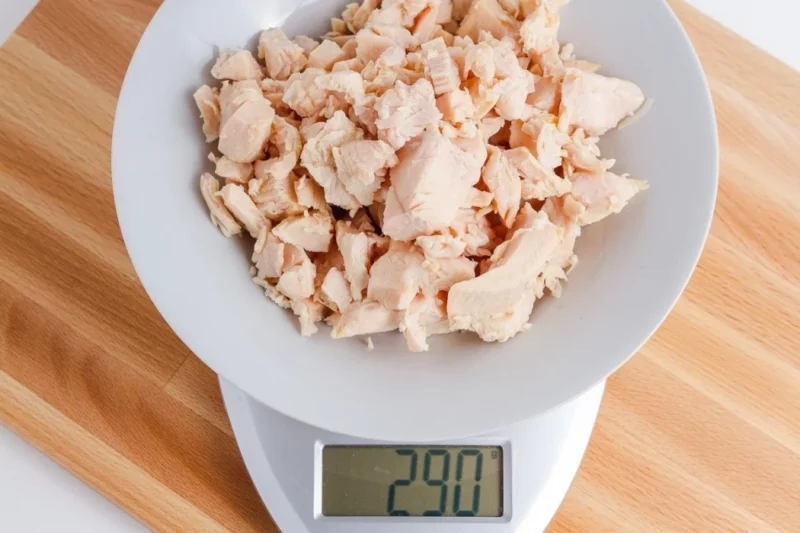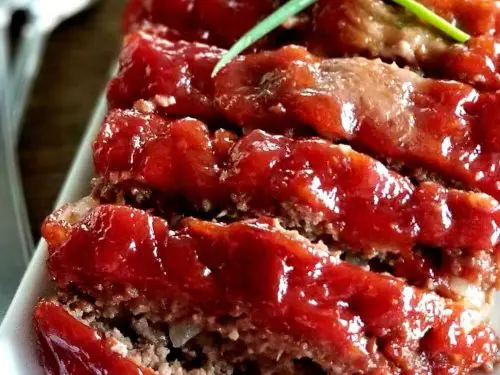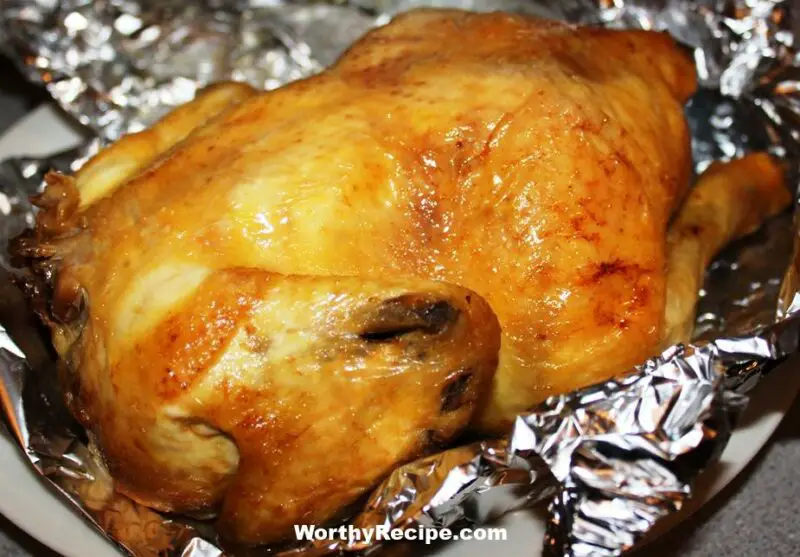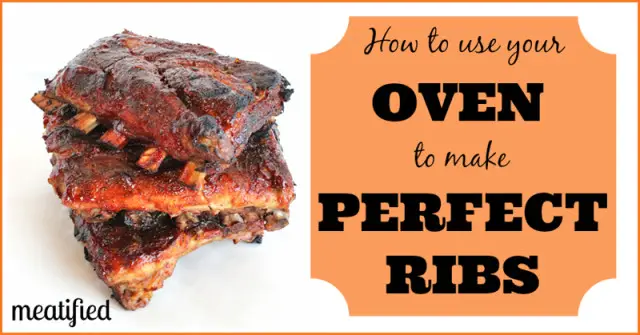Have you ever bought a pound of raw chicken, cooked it, and found that the final weight is less than what you started with? You’re not alone. This difference in weight between raw and cooked chicken can be confusing for many home cooks when trying to plan meals or portion sizes. Understanding how much raw chicken weighs when cooked and why this difference occurs can help you become a more confident and efficient cook.
This article will dive into the basics of meat shrinkage during cooking and explore factors that impact how much weight raw chicken loses when cooked. We’ll also compare different cuts and types of chicken, provide tips to overcome uneven cooking or meat quality issues, and discuss the impacts on recipes and meal planning.
Understanding the Basics
Meat generally loses weight when exposed to heat because moisture evaporates during cooking. According to certified Master Chef J.W. Foster, one way to think about this weight loss is through “the 30/70 rule.” This rule states that meat will lose approximately 30% of its original weight during cooking, leaving only 70% of its starting weight as edible meat.
Raw chicken typically contains around 75% water, which means it has a high potential for moisture loss during cooking. Cooking methods like grilling or roasting at high temperatures can cause greater moisture evaporation than low-temperature methods like braising or sous vide cooking.
Not only does water evaporate from the meat during cooking, but fat also renders out of the meat. This fat loss can contribute to additional cooked weight loss compared to leaner cuts of chicken with less fat content.
Overall, the reduction in weight is due primarily to moisture loss caused by heat exposure during cooking.
Factors That Impact Cooked Weight
Various factors affect how much raw chicken will weigh after it’s been cooked:
Cooking Method
Different cooking methods produce different levels of moisture evaporation because they expose food to heat in varying ways. For example, grilling or roasting at high temperatures will cause greater moisture evaporation than low-temperature methods like poaching or braising. In general, cooking methods that involve less direct heat exposure to the meat tend to reduce weight loss since the moisture doesn’t get a chance to escape.
Temperature
Higher temperatures cause more moisture loss because they stimulate evaporation. Cooking chicken at lower temperatures such as baking in an oven with relatively low heat can preserve more of its starting weight.
Seasoning or Marinade
Ingredients like salt and acidic components such as vinegar in marinades can reduce moisture loss during cooking by helping retain water within the muscle fibers.
Cut of Chicken
Different cuts of chicken have different amounts of muscle, fat, and connective tissue, so their shifts in weight may vary. Additionally, bone-in Chicken generally weighs more after cooked since the bones don’t affect shrinkage.
Measuring Cooked Weight Loss
One way to accurately measure the amount of weight loss during cooking is by using a food scale. To do this effectively, weigh the raw chicken before cooking and then weigh it again after cooking has completed. Subtracting the final cooked weight from the initial pre-cooked weight reveals how much water has evaporated during cooking.
Another way to estimate weight loss during cooking is through experience and observation. By understanding what well-cooked chicken should look and feel like, you’ll be able to distinguish whether your cooked recipe came out as expected within an acceptable range.
However, keep in mind that it’s not always easy for home cooks without precise weighing scales to determine accurate measurements when working with meat shrinkage changes.
Comparing Different Cuts and Types of Chicken
Different types of chickens have varying degrees of raw meat shrinkage after being cooked:
Comparing Breast vs Thigh Meat
Chicken breast is a popular cut that contains very little fat content compared to other cuts such as thighs. Fat content can affect how much moisture chicken retains during cooking. Therefore, chicken breast experiences more weight reduction after cooking compared to thigh meat.
Comparing Boneless vs Bone-In Cuts
While bone-in cuts tend to weigh more than boneless ones due to the added weight from bones themselves, they often lose less weight when cooked than their boneless counterparts due to retaining more moisture. When using bone-in cuts, don’t forget to factor in the extra weight contributed by bones itself into overall cooked weights of the dish.
Overcoming Uneven Cooking and Meat Quality Issues
Inaccuracies in cooked meat weights can cause problems with flavor or texture if some pieces are overcooked while others remain undercooked. To prevent this:
Maintain consistent temperature:
Keep your cooking temperature controlled throughout by preheating ovens, avoiding opening the grill lid too frequently, and positioning food so that it cooks evenly.
Cut meat in even portions:
Cut raw chicken into equally sized pieces so they cook at a similar rate and thoroughly for an evenly cooked result through essential food preparation skills
Significance of Raw Meat Quality:
Chicken containing more water content due to poor sourcing or rearing practices tend to lose more moisture during cooking and hence results in a bigger final loss estimate.
Impacts on Recipes and Meal Planning
It’s essential for home chefs always to remember the difference between uncooked weights specified in recipes versus actual weights post-cooking. This understanding is especially relevant when meal prepping or purchasing chicken portions because it’s easy to be misled about how many servings a particular amount of raw chicken will ultimately make based on shrunk size.
Moreover, if you’re preparing dishes with specific calorie proportions for fitness goals or dietary requirements, accurate estimation is crucial.
Conclusion
Knowing how much raw chicken weighs when cooked is fundamental information that can help you accurately plan meals and portions. Remember that most types of meat will lose around 30% of their raw weight during cooking, primarily due to moisture loss. Cooking methods, temperature, seasoning, and cut all impact the total shrinkage you should expect. Home chefs can stay consistent and accurate by using weighing scales to measure shrinkage amounts or developing an expert eye for proper cooking methods.
By being mindful of potential variables affecting cooked chicken weight, chefs can confidently create tasty and healthy meals with chicken that meet their dietary goals.
Q&A
- Q: Can the weight of raw chicken change after it is cooked? A: Yes, the weight of raw chicken can significantly change after it is cooked. This happens due to evaporation of water content during the cooking process.
- Q: How much weight does a pound of raw chicken lose after being cooked? A: A pound (16 ounces) of raw chicken can potentially lose from 3 to 5 ounces of weight upon being cooked, depending on its preparation method, cooking time and temperature.
- Q: Is there any way to prevent raw chicken from losing too much weight after cooking? A: The best way to prevent raw chicken from losing a large amount of weight after cooking is to avoid overcooking and use cooking methods that allow minimal moisture loss, such as sous-vide or oven roasting with a covered dish.
- Q: Why is measuring the weight change of cooked chicken important in recipes? A: Measuring the weight change of cooked chicken can help determine accurate serving sizes and nutritional values for a recipe. Additionally, it can serve as an indicator for whether or not the chicken has been properly cooked and is safe to consume.




